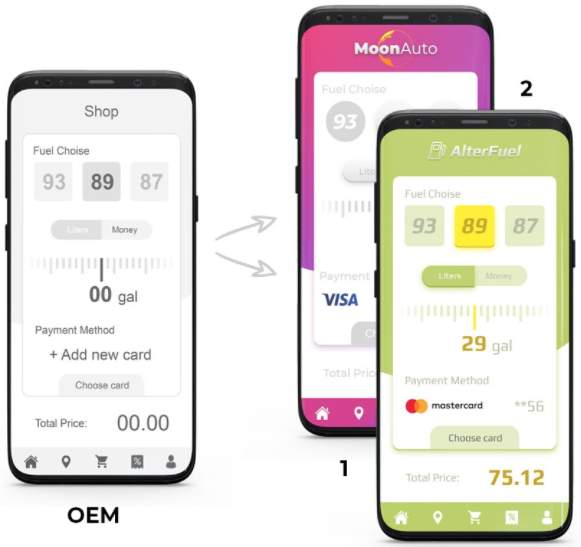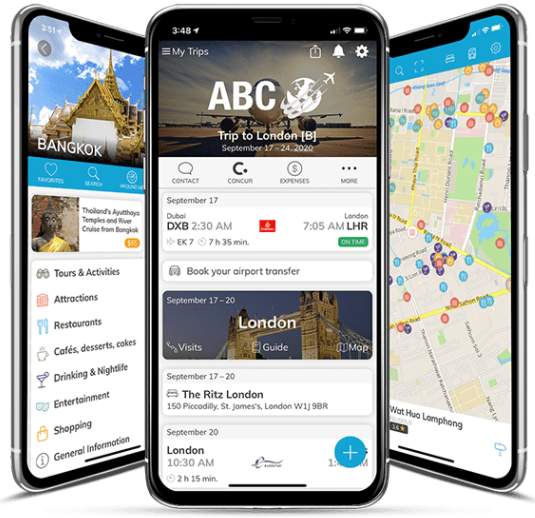Table of Content
Currently, mobile applications are the key driving force behind the mobile explosion in the consumer technology market, and hold the power to do the same in the mainstream business world.
That being said, when businesses seek to launch a mobile app, they typically have two options: buy or build! While it might seem like a straightforward choice, this debacle can end up being complex for so many. So let’s find out how, shall we?
Building a Custom App
Most mobile apps are typically built from scratch via rigorous sequences of research, development and planning. The mobile application development process entails creating installable software bundles (like code, binaries, assets), implementing backend services like data access via APIs, and testing the application on target devices.
These technical activities are typically conducted by competent mobile app developers and designers who build the desired app based on specific requirements.
Buying a Clone App
When you can’t build a mobile app from the ground up, the other alternative is to purchase a clone app (white-label app) and configure your desired features and attributes. Such solutions tend to be readily available solutions with pre-existing structures, architectures, and a modifiable code.
For example, several companies or freelance developers have been known to sell Uber and Airbnb clone apps to individuals hoping to copy the same model in their different geographies and countries. So, generally speaking, clones tend to impressively imitate the main features of market leader mobile applications.
 An example of a clone app template. Image Credit: www.geeksolutions.co
An example of a clone app template. Image Credit: www.geeksolutions.co
Furthermore, with their promise of faster development, and a quicker time to market, app clones are increasingly becoming a go-to solution for many app founders and aspiring entrepreneurs.
Build Versus Buy Considerations
As alluded to earlier, making this choice isn’t as straightforward as many would think because of several factors that may come into play. Overall, making the right decision necessitates one to critically think through five key considerations:
- The problem being solved
- The internal know-hows
- The costing
- The timing
- The desired flexibility
Considerations When Choosing to Build an App
This choice revolves around time and cost. In essence, if you have adequate time to extensively test and iteratively modify your software, you can build from scratch easily. However, there are several few things you should carefully look at first:
Web Vs Mobile
It’s essential to determine whether you seek a web-only product, native or cross-platform mobile app. This can severely impact your outlook, cost, and time scale, especially if you make the wrong choices.
 Mobile app versus web app. Image Credit: www.biznessapps.com
Mobile app versus web app. Image Credit: www.biznessapps.com
Value Added
Next, ask yourself if your product will add value to your customers and save them time or money. Carefully consider the answer to this question before you decide to invest your own time and money into the building.
Technical Debt
It’s also important to estimate the technical debt that you could incur. In practice, with a custom solution, you are basically assuming ownership for the long haul. As such, it means factoring in time and money to resolve any additional code changes, updating the knowledge base and growing internal teams, and even wrestling with additional storage and infrastructural costs.
Daily Use
Another question is how often your customers use your application. If it’s multiple times a day, it’s worth considering a bespoke solution. However, if once a year, it might not make sense to spend two years developing the perfect platform.
Development Difficulty
It’s important to ascertain the potential difficulty of creating a minimum viable product (MVP). So, ensure to engage different developers to gauge how hard it will be to build the exact software you have in mind, then use that insight to inform your decision whether to build/buy a clone.
Buying an App
Clone app development, or buying a white label mobile app platform and tailoring it to suit your specific needs, takes away part of the heavy financial risk of bespoke building out of the equation. It also enables entrepreneurs to centrally focus on their business instead of developing and maintaining software.
Pros of Clone App Development
- Cost Saving: Clone app development is relatively affordable in contrast to building an app from the ground up. In practice, clone apps constitute ready-made elements, from design, features to development. As a result, businesses don’t need to spend more money and resources on every individual section or component of the app.
- Security and Battle-tested: Generally, clone applications are replicas of famous brands. And thus, they are tested with several people at every stage by developers, or businesses, and even tested by the customers.
- Easy Maintenance: In most cases, once you buy a clone script from a clone app development company, you get complete maintenance support from their end, even after the sales. Hence, it’s highly manageable to maintain the code.
- Timely Launch: Broadly speaking, the average custom mobile application necessitates a minimum time of 2-4 months based on the instituted requirements and technical concept. On the other hand, a clone app can be deployed to one’s business service within a week because it is more or less a ready-made solution. In some cases, it is as straightforward as inputting the logo and changing a few configurations before deployment to the market.
- Domain Knowledge: Importantly, buying an app allows you to work with a white label provider with domain knowledge. For example, a transport industry insider who knows online taxi services inside and out and who has learned the nuances of the space.
 An example White-label Hotel concierge app. Image Credit: whitelabel-concierge.com
An example White-label Hotel concierge app. Image Credit: whitelabel-concierge.com
- Product Updates: Sometimes, implementing product updates can cost as much as the initial development, and these product updates must be performed monthly or even quarterly. Most clone app companies typically offer product updates for free, which cater for new operating systems, introduce innovative features, and deliver advanced reporting capabilities and insights.
- Mobile Marketing Services: Some clone/white label application platforms also offer mobile marketing services, from in-store signage and education to App Store search ads and targeted email campaigns. All these services can help you get started with driving your audience to download your new mobile app, purchase in-app services, and engage your platform.
Cons of Clone Apps
Unfortunately, despite the many benefits of the clone/white-label route, it typically manifests several drawbacks such as limited functionalities, generic UI/UX, limited scalability, amongst others. Let’s expand on this, shall we?
- Scalability: Because clone apps are replicas of existing modules, they do not provide much room for flexible scalability. On the other hand, custom solutions are built from the ground up, and thus are easily customisable according to the business needs.
- Poor Application Quality: Many clone apps are not up to state-of-the-art quality in terms of functionality or design. In some cases, they lack basic functionality or are just too complex to use. On the contrary, custom app development ensures that your software has better cutting-edge functionality that is robust and easy to use.
- Poor User Experience: Because white-labelled apps limit app owners to a handful of available features, this can significantly impact customer/user experience as they are always looking for tailored or unique features. It’s the reason why tailored solutions easily intrigue customers and get their attention because of personalised user experiences.
- Unwanted Features: Clone apps typically leave businesses burdened with irrelevant elements like undesirable features, no matter how much they despise them. However, in bespoke development, you can easily eliminate unwanted or irrelevant features that don’t fit your requirements without worrying about breaking the system code.
- Security: One of the key concerns of employing white-labels apps is security. Unfortunately, some clone apps are more prone to cyber hacks and malicious intent that could compromise user privacy. Such nefarious attacks typically aim to extract personal data, even allowing hackers to gain device control with ransomware.
Understanding the Total Cost of Investment in Buying Versus Building
Unfortunately, many companies sometimes invest in software without thinking about its long-term future. Basically, they make the mistake of building or buying without defining who will be responsible for the software maintenance in the long term.
When constructing a custom application, it is important to carefully determine who will make continual code changes as employees frequently leave or change jobs within companies. As such, it’s important to ensure knowledge that comes when building a mobile application is not lost while also planning how the solution will be replaced or refactored as these processes can be complicated and expensive.
 White label travel app example. Image Credit: mtrip.com
White label travel app example. Image Credit: mtrip.com
In the same token, if you choose to purchase a white-label solution, you need to figure out how much configuration is necessitated in the long term, and how sophisticated the work will be. Also, ask yourself who will conduct the configurations and how long they will take.
Remember that businesses tend to evolve and require updates, or replatforming at some point – whether it’s in six months, nine months or five years. So, carefully consider who will be responsible, and whether the development work will stay in-house or be outsourced.
Key Fundamentals to Consider Before Buying a Clone
- Understand the legality of utilising or extending the code (licensing?)
- Determine how much of the app is going to be integrated. For example, ascertain whether it’s a black box where you put an input and simply get an output, or if you’ll be required to perform extensive development within the software internals.
- Investigate if you can easily test code as well (you can survey to identify tests already written and how the code performs on forums)
- Carefully understand the versioning as different codebases perform uniquely for different users.
- Evaluate the number of programming languages the clone application uses, as you might be forced to rewrite some code if the languages/versions differ.
- Ensure you have access to the people who wrote the code to ask various questions along the way.
- Find out if the code is written to scale as cramming more features on top of a poor design is harder than rolling a new solution.
Conclusion
In summary, whether you purchase an existing codebase or engage in custom development, you need to understand your application’s code. Furthermore, if you outsource to a team to build or configure a white-label solution, consider the administrative complexity of controlling a team outside your immediate circle.
Ultimately, the choice to build versus buy a mobile application should not be made lightly as it will have huge impacts later on, with regards to maintenance and sustainability. As such, always do some research and ensure you are ready to take on the technical debt and consequences of whatever choice you make.
If you’re considering on building a custom app and have limited knowledge in technicalities, reach out to Techies, a renowned mobile app development company in Malaysia that has what it takes to guide you and bring your digital ideas come to life.


